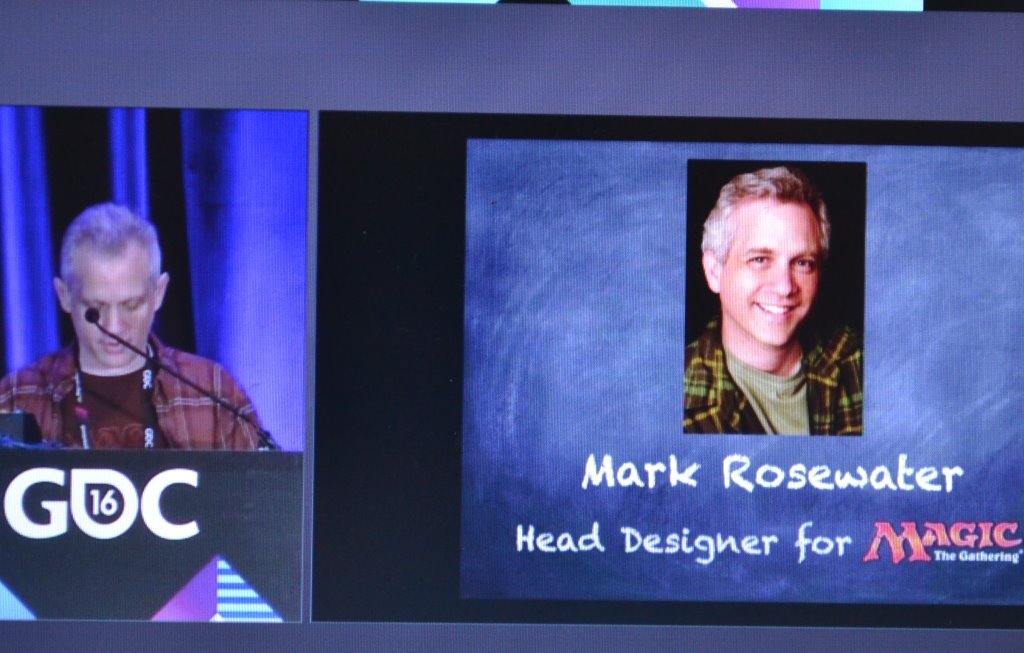
by Tom P Kolodziejak | Jun 26, 2016
E3, June 2016 – Every year at E3, the Entertainment Software Association (ESA), that owns and operates the show, issues essential facts about the gaming sector. The ESA conducts business and consumer research, and provides analysis and advocacy on issues like global content protection, intellectual property, technology and e-commerce, is the valuable source for information such as players demographics and games statistics. Below what ESA’s report shows for this year.
Who is playing and what is the players’ demographics?
63% of U.S. households are home to at least one person who plays video games regularly, which is defined as 3 hours or more per week. There are an average of 1.7 gamers in each game-playing U.S. household. 65% of U.S. household own a device that is used to play video games and 48% of U.S. household own a dedicated game console.
According to the ESA the gamer demographics are as followed: the average game player is 35 years old: 27% under 18 years, 29% age is 18-35 years, 18% is 36-49 and 26% is 50 plus. 59% gamers are male and 41% female. The most frequent female game player is on average 44 years old and the average male game player is 35 years old. Women age 18 or older represent a significant greater portion of the game-playing population (31%) than boys age 18 or younger (17%). There is an equal distribution of female video gamers in age. 50% are 35 and under and 50% older than 35. The average number of years gamers have been playing video games is 13.
We know who is playing but who is buying?
The most frequent game purchaser is 38 years old. 60% of them are male and 40% are female. 52% of them feel that video games provide more value for their money that DVDs (23%), music (14%) or going to the movies (10%). Of the most frequent game purchasers: 41% purchase them without having tried them, 31% download the full game off the company’s website and 30% purchase after downloading the trial version or demo. There is no surprise that 95% of gamers who own dedicated game consoles purchase video games for them.
What and how the gamers play?
48% of the most frequent gamers play social games. The top devices the gamers use are PC (56%), dedicated game console (53%), smartphone (36%), wireless devices (31%) and dedicated handheld system (17%). Top three types of video games played on wireless or mobile devices are: puzzle/board game/card game or game show @ 38%; action games @ 6% and strategy games @ 6% as well. The gamers who play multiplayer and online games spend an average of 6.5 hours per week playing with other gamers online, and 4.6 hours per week playing in-person. 51% of gamers play a multiplayer mode at least weekly.
Why gamers play?
53% of gamers feel that video games help them to connect with friends and 42% believe that games help them spend time with family. 75% of gamers believe that playing games provide mental stimulation or education.

by Tom P Kolodziejak | Apr 11, 2016
Game Developers Conference, San Francisco – Mark Rosewater, Head Designer for the “Magic: The Gathering” shared his experiences that he gained over the past 20 years on designing, improving, and advancing the same game. Since 1995, he has been working for Wizards of the Coast which created Magic: The Gathering. He mentioned not many games survived that long time and it is no wonder that the game went though many changes. In the period of 20 years they made: 86 randomized booster products, 69 non-randomized products, online licensed and other miscellaneous products, and produced over 14,000 unique cards.
There were also many lessons learned that the game designers can adopt in the process of building their games. Rosewater named 20 lessons. One for each year of his work.
Lesson 1: Fighting against human nature is a losing battle.
Knowing your audience is a key. Since your audience are humans, you know that they can be a little stubborn and have their own habits, so don’t try to change the players to match the game. Change your game to match the players.
Lesson 2: Aesthetics matter. Don’t fight human perception.
Aesthetics is also known as the Philosophy of Art or Science of Beauty. The idea of aesthetics is to study how humans perceive the world. There are differences between individuals, as well as common things that are aesthetically pleasing. In games, players expect the components of their game to have a certain “feel”. That is not only means visual aesthetics, but also things like balance, symmetry, and pattern completion. If any of these components are missing, it makes players feel ill at ease, distracts them from focusing on the game, and makes them pay attention to what your game isn’t instead of what it is.
Lesson 3: Resonance is important.
The audience already has preexisting emotional responses that the game designer can build upon. For example Magic did not invent zombies. Players come to the game with a pre-built emotional relationship with zombies that were created from years of watching pop culture. As a game designer, that’s a tool you should make use of.
Lesson 4: Make use of piggybacking.
Piggybacking is a use of preexisting knowledge to front-load game information to make learning easier. You don’t have to teach players things they already know, like killing a black cat is a bad luck.
Lesson 5: Don’t confuse “interesting” with “fun”.
There is 2 types of stimulation. There is intellectual stimulation (“interesting”) and emotional stimulation (“fun”). Looking at the cards is intellectual stimulation. Playing with the cards is emotional stimulation. We think about ourselves as intellectual creatures but we tend to make most of our decisions based less on facts and more on emotions. So, your game can speak to your audience on intellectual level or you can speak to them on emotional level. Both are valuable, but when you speak to the player on an emotional level, you are more likely to create player satisfaction.
Lesson 6: Understand what emotion your game is trying to evoke.
To be successful with a game you need to know what you want your audience to experience. What emotional response are you trying to create? You must continually ask yourself “What impact will this game choice have on the player experience”? And if it doesn’t contribute to the overall experience then it has to go.
Lesson 7: Allow the player the ability to make the game personal.
It is important for your players to have personal connection with your game. The more the players feel the game is about them, the better they will think of it. How do you do it? Provide a lot of choices, give them different resources, different paths, different expressions. Give the player the ability to choose (and not choose) things, allowing them to feel that what they choose is “theirs”. In Magic: The Gathering, the players can choose: colors, creatures, characters, factions, illustrations and the frames. There are many options available.
Lesson 8: The details are where your player falls in love with your game.
The players want to find a piece of game to call their own. The details matter because the individual will bond with the game through them. What might seem insignificant is anything but that. A small detail might only matter to a tiny percentage but to that percentage it could mean everything.
Lesson 9: Allow your players to have a sense of ownership.
You need to give the players an ability to build things that are uniquely theirs. The players don’t just create a deck of cards, they create THEIR deck: something what personally represents them. So when their deck wins, they win, because the deck is no longer just part of the game. It is an extension of themselves.
Lesson 10: Leave room for your player to explore.
Don’t always show the players the things you want to see. Let your players to find them. Let them discover things. Because if they find them, they will be more invested.
Lesson 11: If everyone likes your game but no one loves it, it will fail.
Players don’t need to love everything in your game, but they need to love something. Something they feel strongly about. Don’t worry that the players will hate something. Worry that no one will love anything, because things that evoke strong responses will most often evoke strong responses in many directions. This means that is almost impossible to make some players love something without making others players hate it. In fact some players enjoy hating what other players love. So stop worrying about evoking a negative response and instead develop something that evokes a strong response.
Lesson 12: Don’t design to prove you can do something.
Creative people tend to have larger egos, because it takes ego to will something into existence. Having an ego is fine but you can’t let your ego drive your motivations. You goal is to deliver an optimal experience for your target audience. Your decisions have to serve your game and not you. So, ask yourself: Is this decision helping me achieve the optimal experience for my target audience or is it being done to fulfill an inwardly facing need for self-satisfaction? If the answer is the latter, you are doing it for the wrong reason.
Lesson 13: Make the fun part also the correct strategy to win.
It is not the players’ job to find the fun, it is your job as a designer to put the fun where they can’t help but find it. Because when the players sit down to play the game there is an implied promise from the game designer that they will have fun. Remember – you have to make sure that what it takes to succeed at your game is the very thing that makes it fun. Fun can’t be tangential. It has to be the core component of your game experience.
Lesson 14: Don’t be afraid to be blunt.
Artists tend to prefer subtlety. They think show, don’t tell. But sometimes subtlety doesn’t work. People can just miss the obvious. For example in Magic we use the keywords to make sure players can focus on the mechanics.
Lesson 15: Design the components for the audience it’s intended for.
When you aim to please everyone, you often please no one. All your players don’t want the same thing out of your game. It is important to understand what different kinds of things your players want and to understand different kind of players you have.
Lesson 16: Be more afraid of boring your players than challenging them.
When you try something grandiose and it fails the players will forgive you, because they recognize you were trying to do something awesome. They respect the attempt and they even stick around to see what you will do next. But when you bore them, there is no such forgiveness, because making the same mistake is not the same as making a new one. When you bore the players, they resent you. Sometimes they stop playing.
Lesson 17: You don’t have to change much to change everything.
The game designers think there is never enough so they keep sticking more elements in. That creates complexity for your players and muddies the message of your game. You waste resources you could use later. Instead of asking how much I need to add? Ask – How little do I need to add?
Lesson 18: Restrictions breed creativity.
There is a myth about creativity that the more options available, the more creative people can be. But this contradicts what we know about how most brains work. The brain is amazing organ, it is very smart. When asked to solve a problem, most brains check their data banks and ask– Have I solved this problem before? If yes, it solves it the same way. Most of the time this is efficient. It lets you avoid relearning tasks each time you do them but it causes a problem with creative thought. If you use the same neural pathways you get to the same answers and with creativity that is not your goal. Here is the trick Mark shared with the audience. If you want to get your brain to get to new places, start from somewhere you have never started before. It forces you to think different in ways and create new problems to solve which results in new ideas and new solutions. What this means is that restrictions aren’t an obstacle but valuable tool.
Lesson 19: Your audience is good in recognizing problems but bad at solving them.
Your players have a better understanding of how they feel about your game than you do. You create the emotional response but they know what that is. They can easily tell when something is wrong. They are excellent in identifying problems. But they are not equipped to solve those problems. They don’t know your tools, your limitations. Use your audience as a resource, as a parameter to discover what’s wrong but take it with a grain of salt when they offer the solutions.
Lesson 20: All of the lessons connect.

by Tom P Kolodziejak | Apr 1, 2016
Jimmy Wales, co-founder of Wikipedia, dreamt about a world in which every single person on the planet is given free access to the sum of all human knowledge. In 2001, he founded Wikipedia, making that dream a reality. Today, Wikipedia is the seventh most visited website in the world. There are 500 million unique visitors every month visiting the site from every country in the world. Wikipedia contains nearly 5 million articles, that is being added to at the rate of 750 articles every day.
Wikipedia is a free encyclopedia that is written by thousands of volunteers, and has content in 288 languages. Key statistics for the site are: 8 languages that have over 1,000,000 entries; 46 languages have at least 100,000 entries; 120 languages have at least 10,000 entries and 223 languages have at least 1,000 entries. For Wikipedia, “free” means not just only no cost for the readers or contributors, but also freedom of speech. Everyone can copy, modify, and redistribute the content, both commercially and for private use.
In 2004 Jimmy Wales and Angela Beesley Starling announced the creation of their next project named Wikia. Wikia follows the same success model of Wikipedia. Wikia is a free web hosting service for wikis. The site is free of charge and derives its income from advertising. It publishes all user-provided text under copyleft licenses (https://copyleft.org/) . Today Wikia has more than 136 million readers every month and is written in 200 language.
Jimmy Wales dream about “the sum” of all human knowledge came true twice, due to his perseverance and his decision on sharing the vision of his dream with others.


